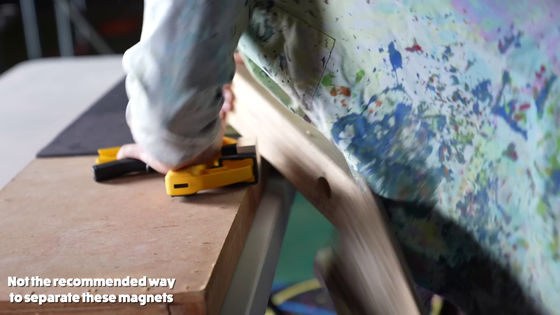A powerful video taken with super slow motion of 187,500 fps that breaks the magnet that is too strong and sticks due to the impact of the force

Ridiculous Magnets Colliding at 187,000FPS-The Slow Mo Guys-YouTube
Two people from The Slow Mo Guys appeared. Gavin Free on the left and Daniel Gruchy on the right.

This time, I will shoot the moment when super-strong neodymium magnets are attracted to each other by magnetic force.
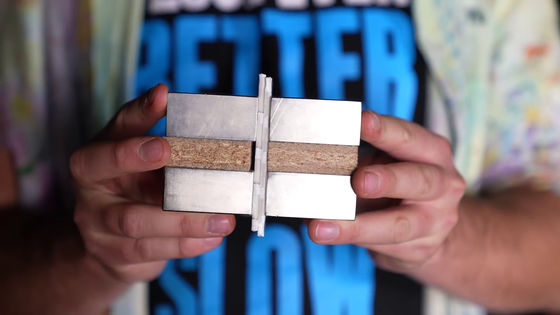
The high-speed camera
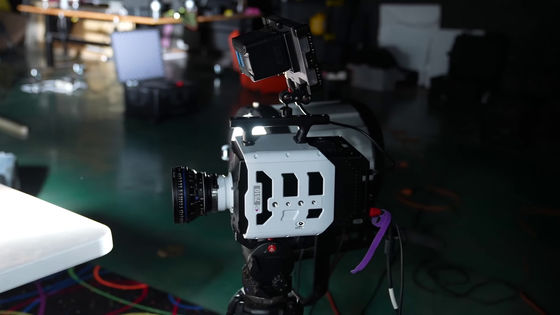
In the scene where the attached neodymium magnets are forcibly separated using a wooden stick, the screen says 'a method that is not recommended for separating magnets'.
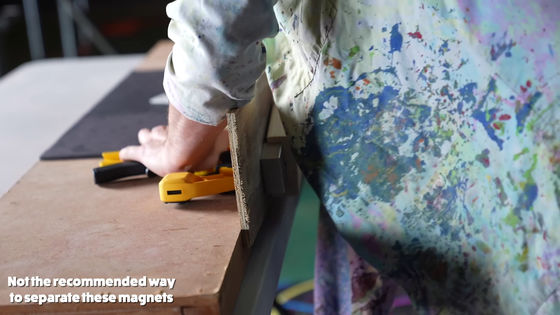
Check the magnetic poles of neodymium magnets with two wooden sticks in between. Adjust the surface of the neodymium magnet so that the N and S poles attract each other.
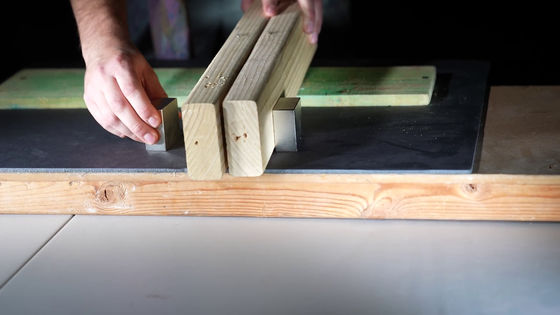
Use a wooden stick to slowly bring the neodymium magnets closer together.
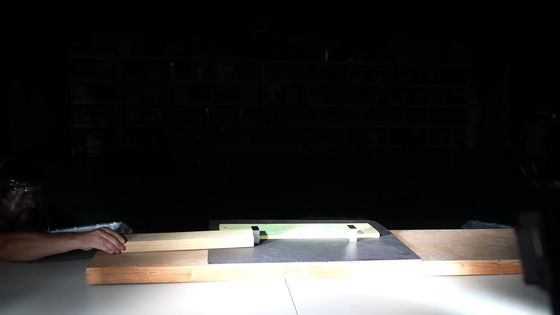
When it comes to a certain distance, the magnet suddenly leaves the bar.
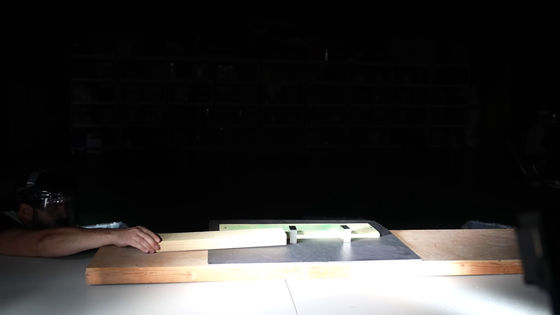
And in an instant, the magnets collided with each other.
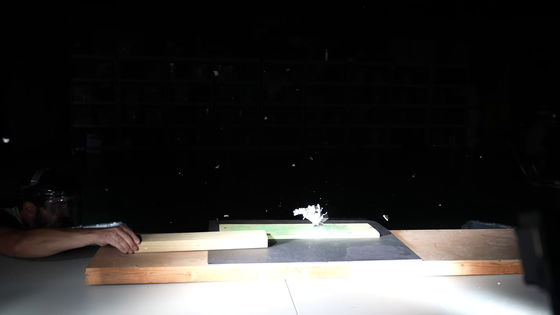
The force of the magnet's attraction was so strong that the two magnets were shattered into pieces.
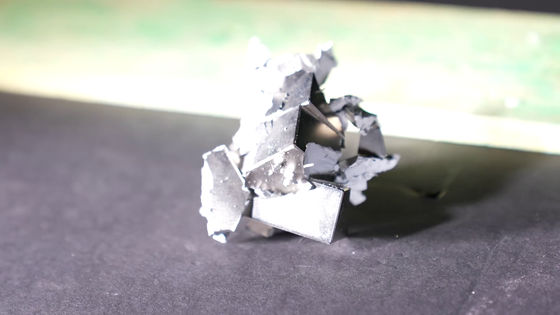
Two of The Slow Mo Guys commented, ``It's incredible, it's like a work of art,'' when they saw the magnets sticking together and self-destructing.

So check the slow motion video that shot the moment when the magnets collided from here.

The magnets slowly and slowly close the distance.
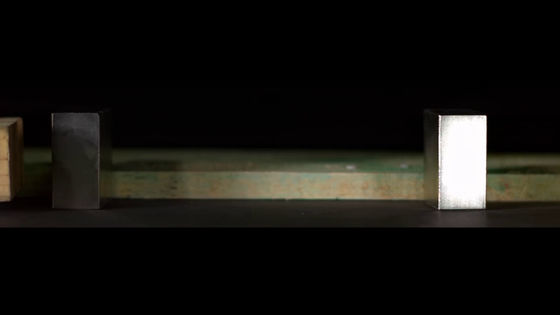
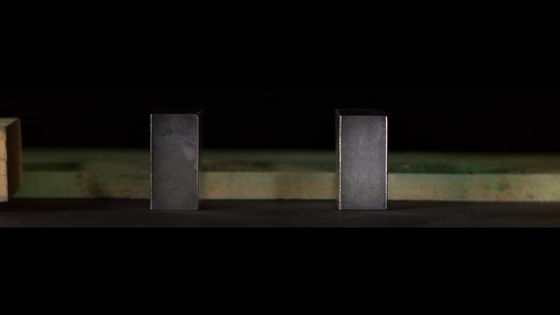
From here it switches to the image shot at 187,500 fps.
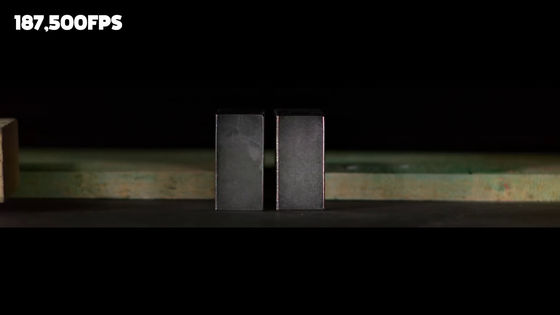
magnets are in contact.
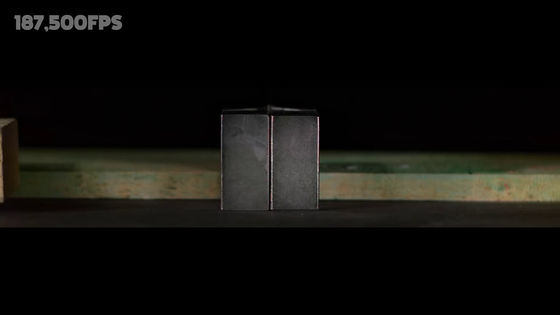
A thin crack appeared on the surface of the magnet.
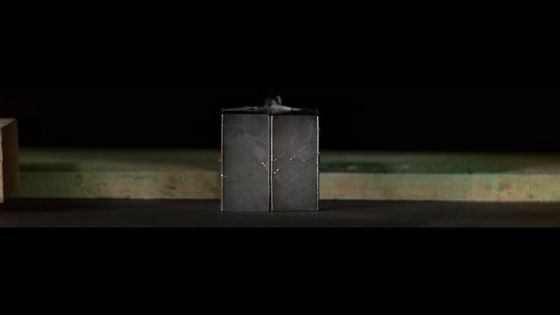
Cracks get deeper.
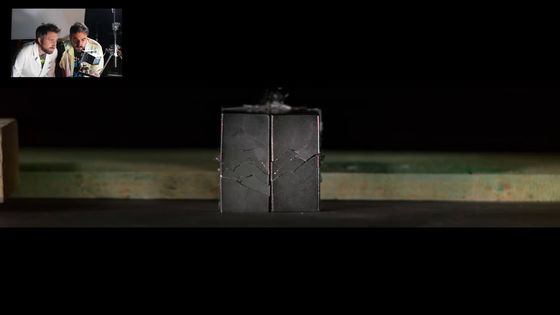
And the magnet could not keep its original shape and collapsed little by little.
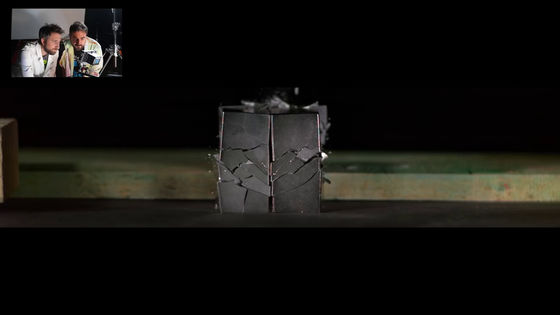
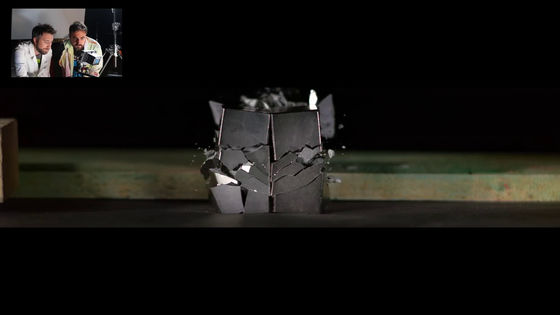
As time passes, the fragments of the magnet will scatter due to the impact of the collision.
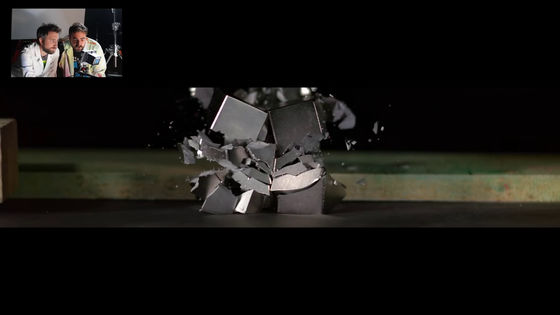
Friction between magnets creates sparks.
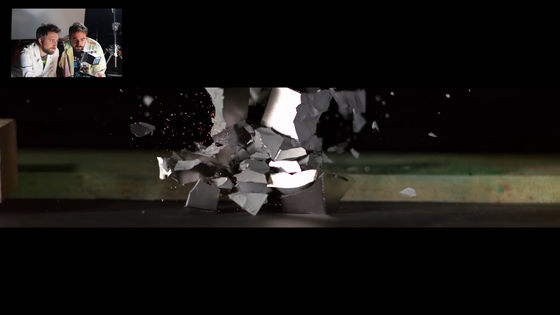
The fragments of the magnet scatter vigorously in all directions, but they return so as to be attracted by the large fragments of the magnet, and the crushed magnet becomes a mess and becomes a single mass.

Looking at the moment of collision up, it looks like this.
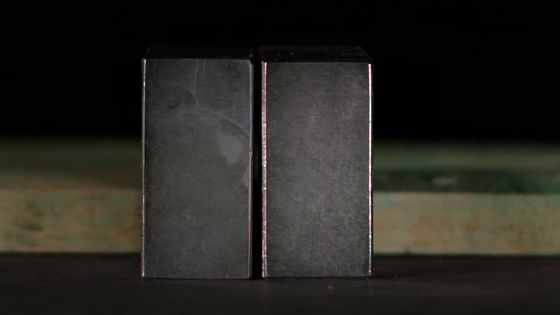
You can see that the magnets collide with each other and the back side of the magnet is raised.
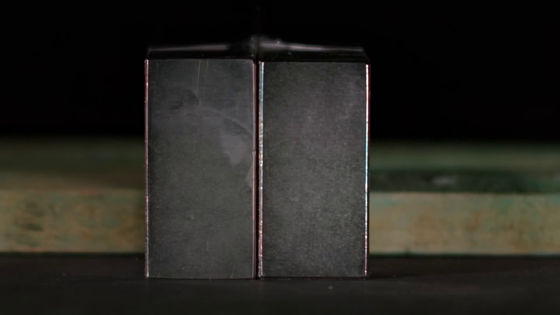
The front also hit and cracked on the surface.
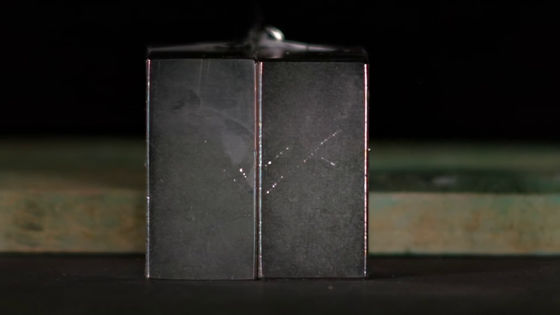
You can see that the crack is deep and fine fragments are scattered.
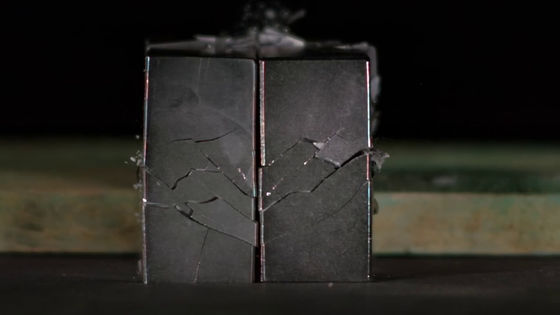
and collapse.
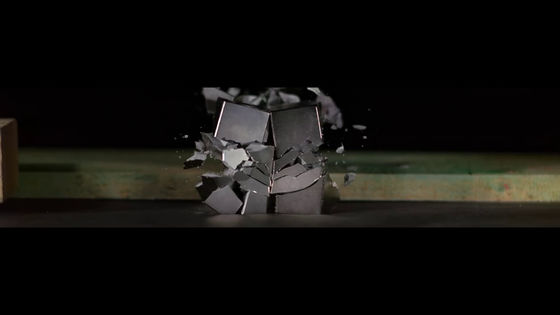
Debris generated during the collision is deeply embedded in the table.
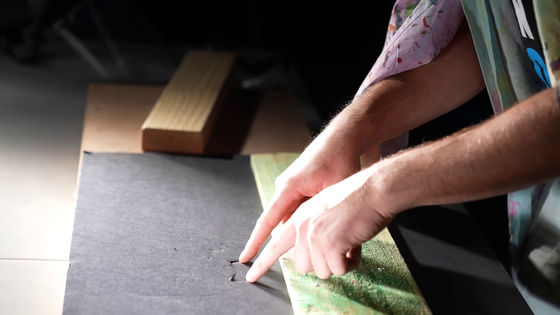
It seems that the fragments around here were scattered around without being attracted to the magnet.
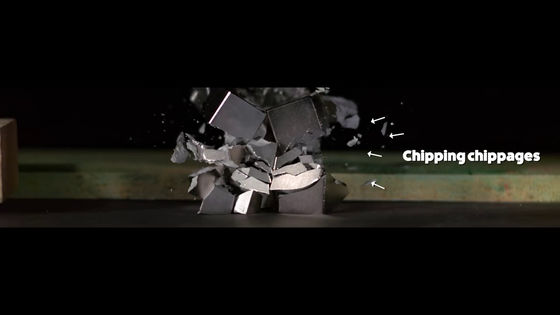
Next, I will shoot slow motion images using another high speed camera,

The moment the magnets collide with each other.

I'm so messed up.

The frame rate at the time of shooting is 10,000 fps.

A magnet collides. Although the way the magnet hits is slightly different, the cracking is very similar.
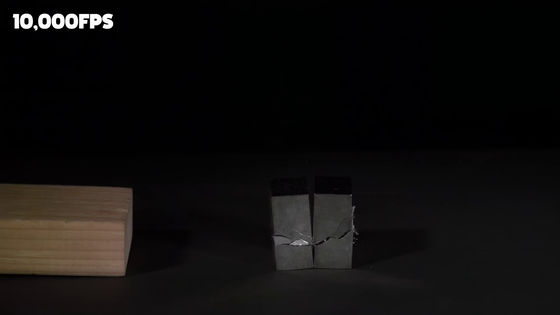
In pieces.
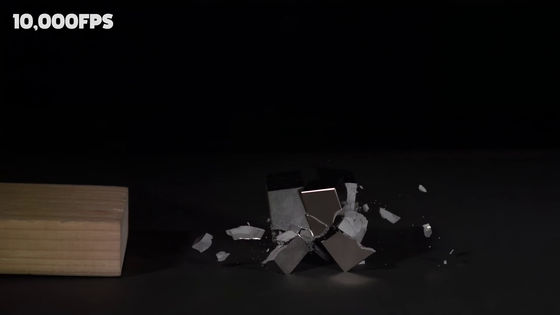
A large mass of magnets floats in the air while scattering fine fragments.
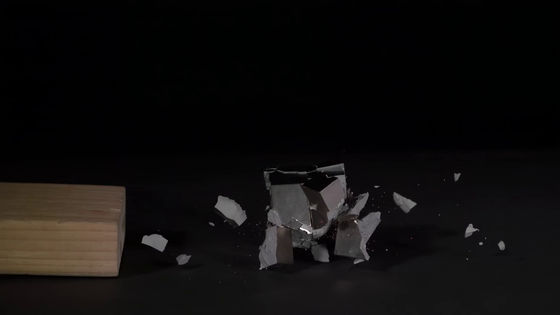
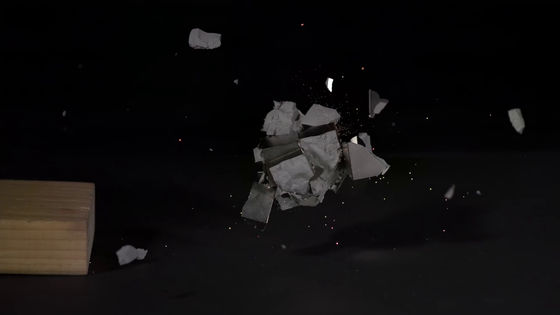
Calculating from the moving distance when the magnets attract each other, it seems that the magnets are moving at a maximum speed of about 7 meters per second (25,200 meters per hour).
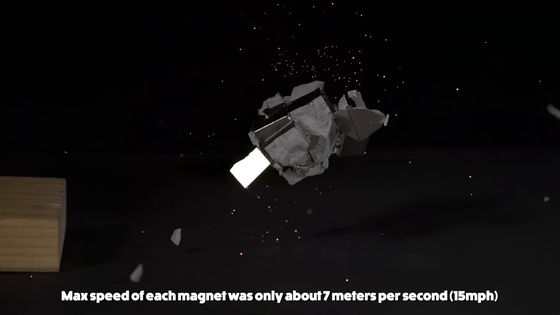
It seems that the fragments flying from the magnet separated from the magnet for only 72 milliseconds and then stuck again.
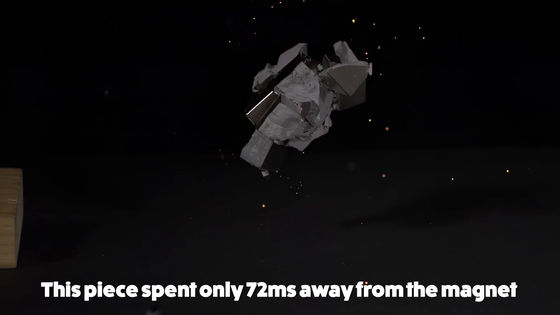
The Slow Mo Guys said, ``The video is very artistic'' and ``It looks like it can be used as a nice paperweight,'' but be careful not to imitate the experiment using a huge neodymium magnet at home because it is very dangerous. is evoking

Related Posts:
in Video, Posted by logu_ii
